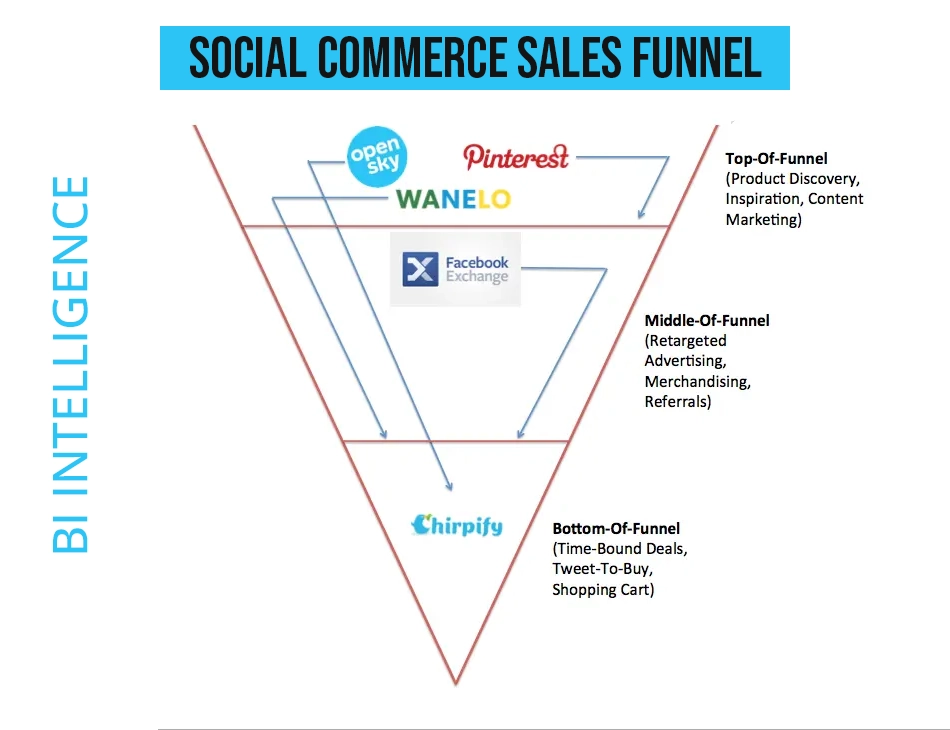We can argue all day regarding what is social commerce and what is not. However, none of us can deny that there has never been a better time to sell products online. While eCommerce brings people to the online store, social commerce takes the store to the people!
Selling your products on social media platforms allows brands & businesses to target users in the consideration phase of their buying journey. The fact that online sales are expected to reach a size of USD1562 billion by 2027 (Source- Statista) is very well indicative of that.
Let's explore what social commerce entails for brands and how they can alleviate their business & revenue with it.
Contents
- 1. What is Social Commerce?
- 2. Understanding Social Commerce Strategy
- 3 Social Commerce Benefits: Why Should Businesses Sell On Social Media?
- 4. Social commerce vs Ecommerce: How Are the Two Different?
- 5. Social Commerce Best Practices: How To Increase Sales Through Social Shopping?
- 6. Frequently Asked Questions (FAQs)
Social commerce is a beautiful, highly functional amalgamation of social media and ecommerce. It allows eager shoppers to skip a step and directly shop for their favorite products directly from their social media account!
In a nutshell, social commerce is an integrated shopping experience for buyers supported by user generated content on the same platform and enhanced by social interactions.
Thus, from product discovery to product reviews, social shopping enables shoppers to have a one stop shopping experience. It facilitates a dynamic and interactive environment for both consumers and sellers, transforming the way people shop online, allowing businesses to reach a wider audience.
Social commerce is a fundamental omnichannel strategy component, that drives more conversions with a human-centric approach to online shopping that strengthens a brand’s relationship with its target & existing consumers.
As today’s socially aware audiences want to feel inspired, informed and assured in what they buy. Social commerce facilitates these needs, with a superior seamless shopping experience that catalysts discovery, personalization and leverages brand association and authenticity to build brand loyalty.
A powerful social commerce strategy includes the utilization of the power of best-suited influencers and their digital communities & content, with fully harmonised cross-channel ecosystems. With data, insights, technology and strategic partnerships brands can remain relevant to the changing prerequisites and desires of consumers.
Are you wondering what other benefits social commerce can entail for your business? Keep reading!
1. Reach a wide audience
Social commerce starts with social media! Thus, all the social media users instantly become your potential customers. Collectively, social media channels are projected to have 5.17 billion users by 2024! As more and more of this share of users have begun a social shopping ritual, it gives businesses an opportunity to tap into a global audience with ease. With the right marketing, selling on social media is quickly becoming as effective as eCommerce.
2. Convert customers where they are
As of 2024, on an average, users are spending 147 minutes on social media daily, with a global social network penetration rate of 54%. (no follow) Thus, it is safe to assume that users are pretty engaged on social networks, making it one step easier for brands to market their products to them. After all, in the age group of 18-24 years, 55% have made at least one purchase through social media, while in the age group of 25-34 years, 48.7% (no follow) are social shoppers.
What better place to gather and share user generated reviews regarding your products than social media? Social shoppers always check reviews before purchasing any product and even go past that and compare products from your competitors. Thus, your happy customers become influencers for you, as users trust no one more than fellow customers. Social commerce, integrated with social proof, makes your brand trust worthy by potential customers.
4. Acquire data on consumer behavior
With selling on social media, brands get access to invaluable customer data. From their profiles to insights from Analytics, this data is highly essential to brands. This allows businesses to study their social shoppers, their habits, how they spend time on social media, their interests, among others. This data, when combined with social listening, allows businesses to create a better experience for potential buyers.
5. Frictionless shopping experience
You came, you saw, you bought! That’s right, that’s how simple it is for customers to making buying decisions in social shopping. By minimizing the product discovery to purchase funnel, social commerce made shopping online a frictionless, smooth-sailing process for users. This is turning out to be a winning contributing factor for businesses as it caters to the short attention span of buyers.
6. Enhanced digital presence and brand awareness
The fact that social commerce combines the brand’s identity on social media with their ecommerce store becomes even more exciting when we consider this brings up a huge branding opportunity, which will not only enhance the business’s digital imprint but also boost sales. This allows brands to encash their newly generated brand awareness through sales simultaneously. This also allows brands to stay on top in their customer’s head through regularly published content.
Social commerce is considered a step up from eCommerce in terms of experience and social proof. However, when it comes to the debate of social commerce vs eCommerce, the fact that eCommerce provides a much more streamlined shopping experience in terms of product inventory and navigation.
Let’s deep dive into how these two are different and what that entails.
| Parameter | Social Commerce | eCommerce |
|---|---|---|
| Concept | Selling through social media by combining ecommerce with social interactions | Selling through dedicate online stores built on brand websites |
| Platform | Social commerce platforms include Facebook, Instagram, Pinterest, etc | eCommerce stores are hosted on specific websites |
| Shopper experience | Social commerce offers an interactive shopping experience often driven by social engagements and social proof | eCommerce focuses on providing their shoppers a streamlined experience prioritizing product features & description |
| Product Discovery | Users usually discover products via influencer recommendations, the explore page, and ads | Users usually discover products via search engines, website navigation, etc |
| Trust | Trust Trust is built through user generated content, reviews by other users, ratings, etc | Trust is built through customer reviews, product ratings, and secure payment gateways |
| Reach | Social commerce gives brands access to their large user base through social media videos | eCommerce has to rely on ads, search engines, and other marketing efforts |

Source Link
Here are our top best practices for social commerce that you don't want to miss out on:
Appealing Product Images
If you are a new business, or maybe just new to social commerce, the very first best practice to follow is creating an appealing product profile by using a high quality product image/videos. This seeks user’s attention and encourages them to interact with your product listing and thus, step into the social commerce sales funnel.
Social shopping is majorly driven by user preferences and algorithms. However, sometimes products need a little push to tale space and gain visibility on the social commerce platform. This is where social ads integrated with shopping tabs placements come into the picture. Investing in social ads and using demographic targeting and retargeting strategies allows brands to reach potential customers who have shown interest in your products.
Seamless Checkout Process
Having a smooth checkout process is just as crucial as having an immersive social shopping experience. Thus, ensure that you have minimum steps from cart to payment, offer multiple payment methods for convenience, and secure payment gateway for satisfaction. This will help businesses retain customers.
Shoppable Posts & Tags
The best way to promote your products on social commerce platforms is through shoppable posts and tags. This allows the platforms to boost your products organically and reach your target audience. This method also makes it easier for users to discover and purchase products.
Provide Seamless Customer Service
Getting customers to your social shopping storefront is one story. Ensuring they have a smooth shopping experience and readily available customer support if needed is completely another chapter. Having a seamless customer service ensure that customers return again and again to your store and become loyal to your brand!
Happy customers are your biggest advocates! Truer words haven’t been said! Before making a purchase decision, analyzing reviews by previous buyers is a part of any customer’s buying journey. Now your job as a brand is to ensure your happy customers share their reviews to allow other make an informed purchase.
To Sum Up
In order to stay ahead of competitors, brands need to switch up their social commerce strategies and efforts from time to time. Social media has transformed how users interact and purchase products online. Now it is time for brands to adapt to it.
Thanks for reading!
Frequently Asked Questions (FAQs)
1. How does social commerce work?
Social commerce integrates ecommerce onto social media platforms. These platforms foster browsing, discovery, and purchase all in one place, without having to leave the platform.
2. Why is social commerce important?
For both brands and customers, social commerce has become essential as it allows them to sell and purchase products, respectively, in one place. This eliminates several steps of the sales funnel.
3. What are the two types of social commerce?
There are two basic forms of social commerce: Native social media shopping solutions (for example, Facebook and Instagram Shops), and Marketplace Sales (for example, Facebook marketplace and Craigslist).
4. What is a social commerce platform?
A social commerce platform allows social media users to discover and purchase products from brands without leaving the application or website.
